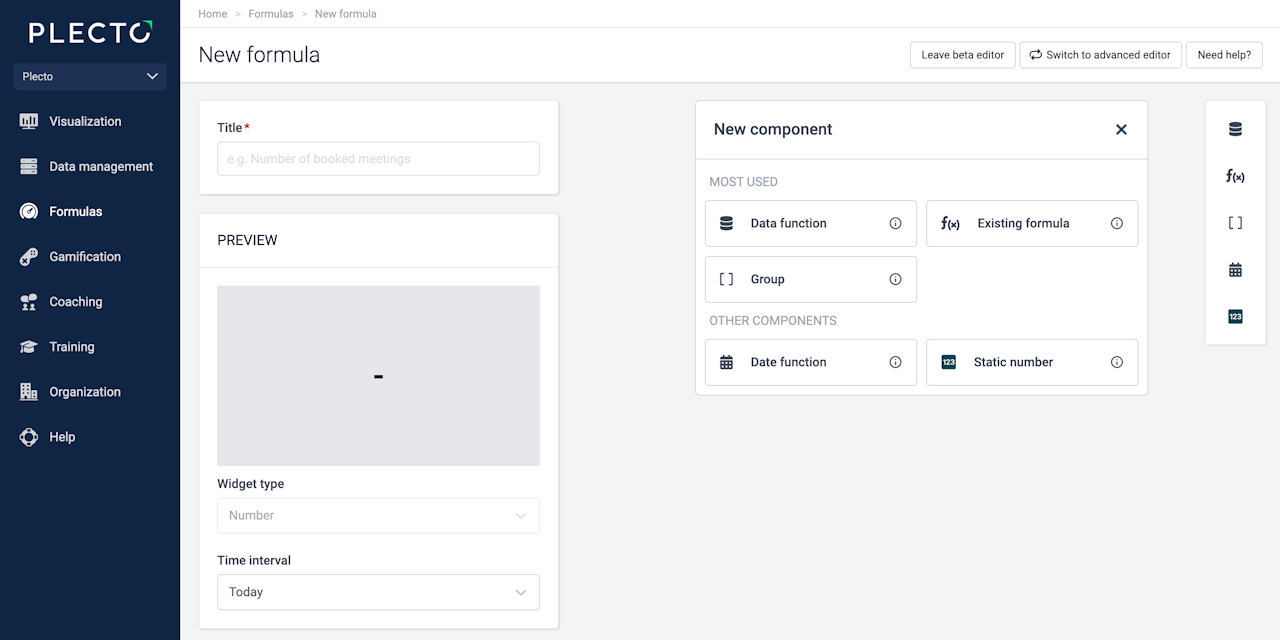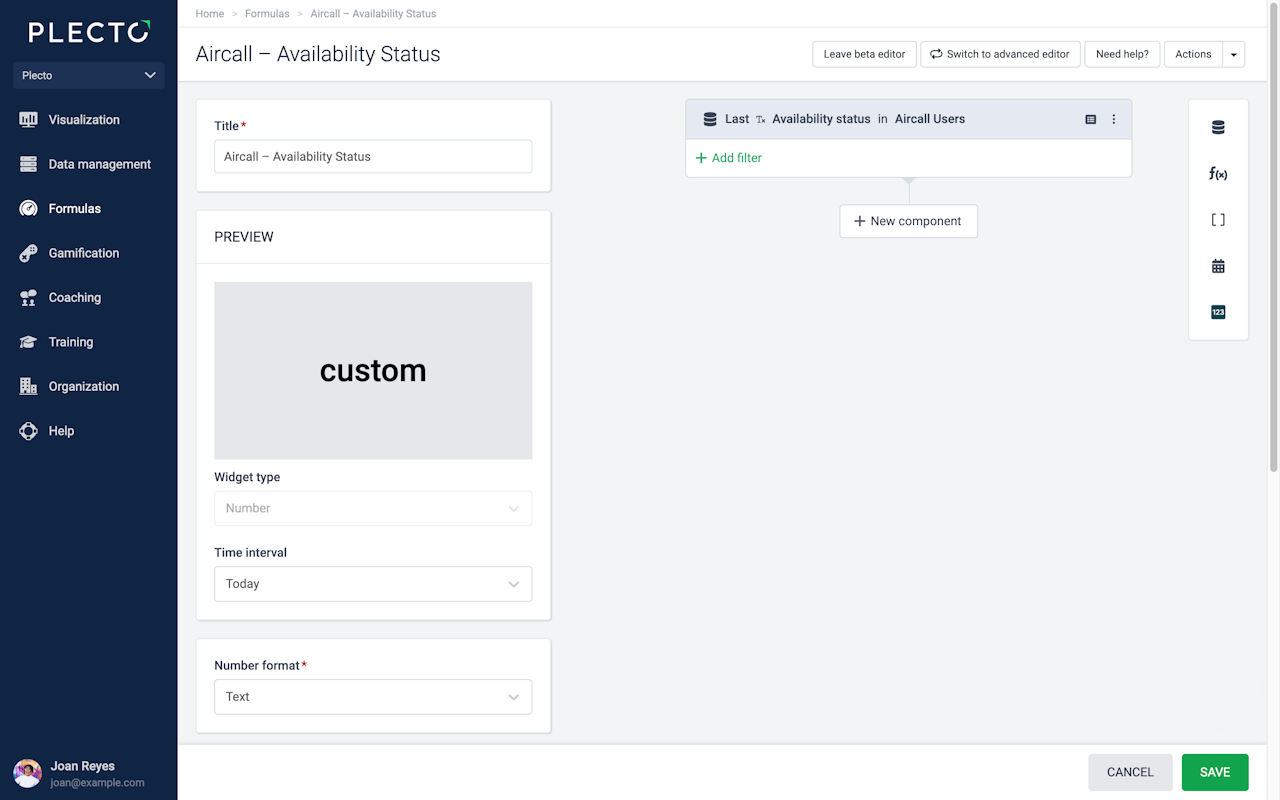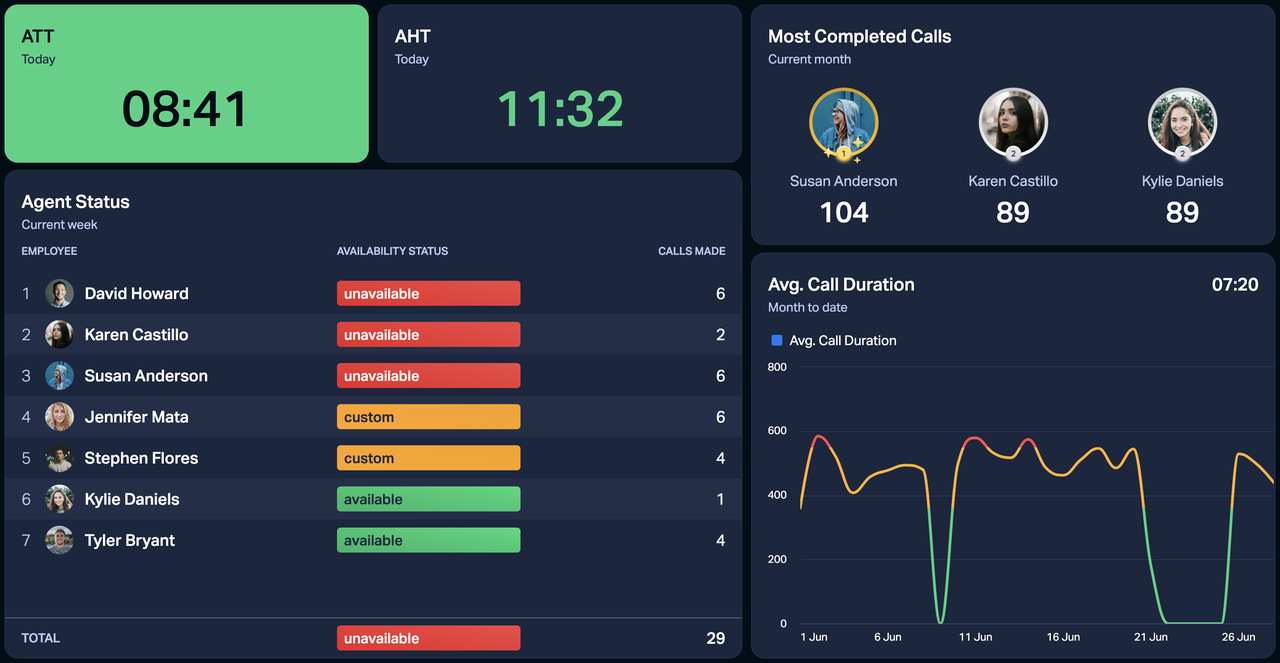Create formulas with components
Calculate your data and create multipurpose formulas in our Formula Editor.
The Visual Formula Editor is based on components – calculate data from your data sources, use existing formulas or static numbers, and more.
Watch the video or scroll down to learn more!

Components
Components are the building blocks of your Plecto formulas. Add as many components to your formulas as you need and combine data from different data sources.
The currently available components are:
Data function: It allows you to calculate the total number of registrations in a data source, sum of values in a field, max, min, average, and more.
Existing formula: Spare yourself from remaking the same formulas; use the ones you already have.
Group: Grouping works just like parentheses. You can add new components to the group or drag and drop them across the formula editor.
Date function: This component counts the number of days, workdays, or holidays within the time period you select on the widget.
Static number: Add a fixed number to the formula.

Formula preview
Preview the formula result right in the editor before adding the formula to your dashboards and reports. This way, you can make sure the formula works.

Conditional colors
Conditional colors are a set of three colors – red, yellow and green – that help you identify your progress with visual cues.
Add conditions such as milestones or targets to your formulas and see the dashboard widgets change color based on your performance.
Number format
You can choose the format of the formula output. Number formatting determines how the result of the formula will show on your dashboards and reports.
The available number formatting options are:
Text: Display the latest completed tasks, campaign names, or any other text.
Decimal number: Display a number value. You can select the number of digits that appear after the decimal point. You can also reverse the trend indicator (the small triangle on the widget that appears green or red whenever a value increases or decreases) to recognize lower values as the preferred outcome. For example, 3 minutes of the average call waiting time is better than 5 minutes.
Yes / No: The formula will return "No" if the result is 0 or "Yes" if the result is 1 or higher.
Percent: Display values as a percentage. Here, you can also select the number of digits that appear after the decimal point or choose to reverse the trend indicator.
Duration: Show the duration of your activities. If you have a column in your data source that shows the duration of an activity in seconds, this formatting option will make sure to convert your data to an understandable duration output. For example, 7 days 10:35:12.
Date and time: Display the date and time of your last closed deal, average resolution time, or any other date and time from a date field in your data source.
Date: Display the date of your upcoming billing, last closed deal, or any other date from a date field in your data source.
Time since: Display the running time since an activity started. The time counting starts from the date and time that is returned from the formula.
